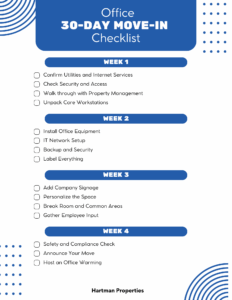In a world where remote work has become a norm, the office might seem like a relic of the past. Yet, there’s a compelling case for working in the office—whether full-time or on a hybrid schedule. While remote work offers flexibility, the office environment presents unique advantages that can boost productivity, foster collaboration, and enhance professional growth.
1. Enhanced Collaboration and Innovation
One of the most significant benefits of working in the office is the ability to collaborate spontaneously. In-person interactions often lead to more dynamic brainstorming sessions, quicker problem-solving, and innovative ideas. Face-to-face meetings allow for richer discussions, non-verbal cues, and immediate feedback that can be lost in virtual settings. The energy of a shared workspace can spark creativity and drive team synergy.
2. Stronger Team Bonding
Working in the office helps build stronger relationships among team members. Shared experiences, whether it’s a coffee break, a casual chat, or team-building activities, contribute to a sense of camaraderie and belonging. These interactions can strengthen team cohesion, improve communication, and create a supportive work environment.
3. Clearer Boundaries and Work-Life Balance
While remote work offers flexibility, it can blur the lines between work and personal life. The office setting helps establish clearer boundaries, allowing employees to fully disengage from work at the end of the day. This separation can reduce burnout and promote a healthier work-life balance, making it easier to maintain focus during work hours and relax during personal time.
4. Professional Development and Mentorship
In-office work provides more opportunities for mentorship and professional development. Being physically present allows for more frequent interactions with mentors and colleagues, facilitating learning and growth. Junior employees can gain valuable insights and feedback more easily, and managers can offer real-time guidance and support.
5. Access to Resources and Support
Offices are equipped with resources and support systems that may not be available at home. From high-speed internet and office equipment to on-site technical support, employees can benefit from a more structured and resource-rich environment. Additionally, on-site amenities such as break rooms and meeting spaces can enhance productivity and well-being.
6. Structured Environment for Focus
While working from home can be convenient, it often comes with distractions that can hinder productivity. The office provides a more structured environment where employees can focus on their tasks with fewer interruptions. The physical separation from home can also help employees establish a clearer work routine and maintain a higher level of professionalism.
7. Flexibility Through Hybrid Schedules
For those who value the benefits of both remote and in-office work, hybrid schedules offer an excellent compromise. Employees can enjoy the flexibility of working from home while still reaping the advantages of in-person collaboration and team interactions. Hybrid models allow for a balanced approach, combining the best aspects of both work environments.
Conclusion
While remote work has its perks, the office environment remains a valuable asset for many organizations. Whether working full-time in the office or adopting a hybrid schedule, the benefits of in-person work—such as enhanced collaboration, stronger team bonding, clearer boundaries, and professional growth opportunities—are hard to ignore. As we continue to navigate the evolving work landscape, embracing the office can offer a path to greater productivity, satisfaction, and success.











